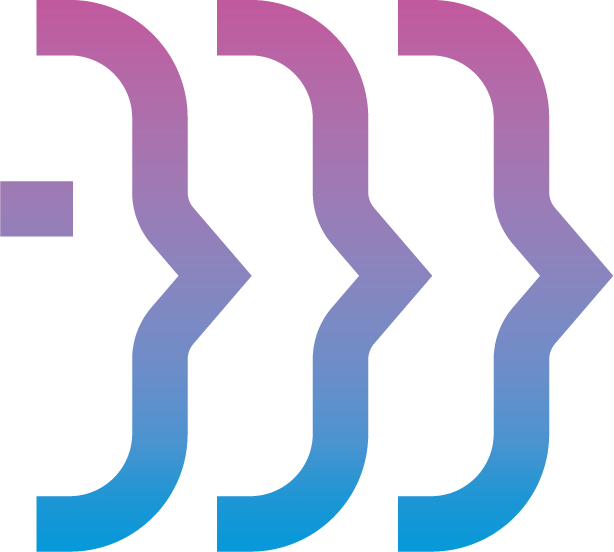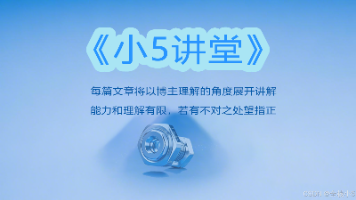融合DeepSeek-V3.1、Qwen-Image与腾讯混元3D:AI大语言模型驱动3D打印的革命性工作流
本文探讨了AI大语言模型与3D打印技术的融合创新,提出了一种基于DeepSeek-V3.1、Qwen-Image和腾讯混元3D的端到端工作流。该流程通过DeepSeek-V3.1将自然语言描述转化为结构化3D设计规范,Qwen-Image生成多视角概念图,腾讯混元3D实现从2D图像到3D模型的转换,最终完成3D打印。这种AI驱动的解决方案显著降低了3D建模门槛,实现了从创意到实体产品的无缝衔接,为
融合DeepSeek-V3.1、Qwen-Image与腾讯混元3D:AI大语言模型驱动3D打印的革命性工作流
引言:AI与3D打印的跨界融合
3D打印技术自诞生以来,已从原型制造逐步走向规模化生产,但传统3D建模的高门槛限制了其普及。近年来,人工智能领域的突破性进展,特别是大语言模型(LLM)和多模态生成模型的崛起,正在彻底改变这一局面。本文将深入探讨如何通过整合DeepSeek-V3.1大语言模型、Qwen-Image文生图模型以及腾讯混元3D图生3D模型,构建端到端的AI驱动3D打印工作流,实现从自然语言描述到物理实体的无缝转换。

一、技术栈概述
1.1 DeepSeek-V3.1:创意生成与结构化描述
DeepSeek-V3.1是深度求索公司开发的最新大语言模型,在推理能力、代码生成和结构化输出方面表现卓越。在本工作流中,它承担以下核心功能:
- 创意激发:根据用户模糊描述生成详细3D设计概念
- 技术规范生成:输出结构化3D建模指令
- 流程控制:协调整个AI工作流的执行顺序

1.2 Qwen-Image:从文本到视觉呈现
Qwen-Image是阿里巴巴研发的多模态视觉生成模型,能够根据文本描述生成高质量图像。在本工作流中,它负责:
- 概念可视化:将DeepSeek生成的描述转换为2D概念图
- 多视角生成:生成物体的不同视角图像供3D重建使用
- 细节增强:补充视觉细节,为3D建模提供参考

1.3 腾讯混元3D:从图像到3D模型
腾讯混元3D是腾讯AI实验室开发的图生3D模型,能够从单张或多张图像生成高质量3D网格模型。其核心能力包括:
- 3D几何重建:从2D图像推断3D几何结构
- 纹理生成:自动创建适配的材质和纹理
- 模型优化:输出打印友好的3D模型文件

1.4 3D打印技术栈
完成3D模型生成后,我们需要将其转换为可打印格式并进行后期处理:
- 切片软件:Ultimaker Cura、PrusaSlicer
- 打印技术:FDM(熔融沉积建模)、SLA(光固化)
- 后处理:支撑去除、表面打磨、上色

二、DeepSeek-V3.1的创意生成与结构化输出
2.1 初始化与API配置
首先配置DeepSeek-V3.1的API访问环境:
import os
import requests
import json
from typing import Dict, List, Any
class DeepSeekAPI:
def __init__(self, api_key: str):
self.api_key = api_key
self.base_url = "https://api.deepseek.com/v1"
self.headers = {
"Authorization": f"Bearer {api_key}",
"Content-Type": "application/json"
}
def generate_chat_completion(self, messages: List[Dict[str, str]],
model: str = "deepseek-reasoner",
temperature: float = 0.7,
max_tokens: int = 2000) -> Dict[str, Any]:
"""
调用DeepSeek-V3.1生成对话补全
"""
payload = {
"model": model,
"messages": messages,
"temperature": temperature,
"max_tokens": max_tokens
}
response = requests.post(
f"{self.base_url}/chat/completions",
headers=self.headers,
json=payload
)
if response.status_code == 200:
return response.json()
else:
raise Exception(f"API请求失败: {response.status_code}, {response.text}")
# 初始化DeepSeek客户端
deepseek_api = DeepSeekAPI(api_key=os.getenv("DEEPSEEK_API_KEY"))
2.2 创意生成提示词工程
设计专业的提示词模板,引导DeepSeek生成高质量的3D设计描述:
def generate_3d_design_prompt(user_input: str) -> List[Dict[str, str]]:
"""
生成3D设计专用的提示词模板
"""
system_prompt = """你是一名专业的3D设计师和工程师。请根据用户的描述生成详细的可3D打印对象设计规范。
你的输出必须包含以下结构化信息:
1. 概念描述:物体的详细外观、功能和风格描述
2. 技术规格:尺寸、比例、关键尺寸参数
3. 结构特征:是否需要支撑、空心还是实心、壁厚要求
4. 打印考虑:打印方向建议、可能的问题点
5. 多视角描述:为生成多视角图像提供详细的文本描述
请以JSON格式输出,包含以下字段:
- concept_description: 字符串
- technical_specifications: 字典
- structural_features: 字典
- printing_considerations: 字典
- view_descriptions: 列表(包含至少3个视角的描述)
"""
return [
{"role": "system", "content": system_prompt},
{"role": "user", "content": f"请为以下描述创建3D设计:{user_input}"}
]
def parse_design_specification(response: Dict[str, Any]) -> Dict[str, Any]:
"""
解析DeepSeek返回的设计规范
"""
try:
content = response['choices'][0]['message']['content']
# 提取JSON部分(可能包含在代码块中)
if '```json' in content:
json_str = content.split('```json')[1].split('```')[0].strip()
elif '```' in content:
json_str = content.split('```')[1].split('```')[0].strip()
else:
json_str = content
return json.loads(json_str)
except Exception as e:
print(f"解析设计规范失败: {e}")
return None
# 使用示例
user_input = "一个未来风格的桌面文具收纳盒,带有行星主题装饰"
messages = generate_3d_design_prompt(user_input)
response = deepseek_api.generate_chat_completion(messages)
design_spec = parse_design_specification(response)
print("生成的设计规范:")
print(json.dumps(design_spec, indent=2, ensure_ascii=False))
2.3 多轮细化与迭代优化
通过多轮对话优化设计概念:
def refine_design_concept(initial_spec: Dict[str, Any],
feedback: str = "") -> Dict[str, Any]:
"""
基于反馈细化设计概念
"""
refinement_prompt = [
{"role": "system", "content": "你是一名3D设计专家,需要根据反馈优化设计。"},
{"role": "user", "content": f"初始设计规范:{json.dumps(initial_spec, ensure_ascii=False)}"},
{"role": "user", "content": f"反馈和建议:{feedback if feedback else '请优化此设计,特别关注可打印性和结构完整性'}"}
]
response = deepseek_api.generate_chat_completion(refinement_prompt)
return parse_design_specification(response)
# 示例优化循环
def design_iteration_loop(initial_input: str, max_iterations: int = 3):
"""
设计迭代优化循环
"""
print(f"初始概念: {initial_input}")
# 生成初始设计
messages = generate_3d_design_prompt(initial_input)
response = deepseek_api.generate_chat_completion(messages)
current_spec = parse_design_specification(response)
iteration = 1
while iteration <= max_iterations:
print(f"\n=== 迭代 {iteration} ===")
print(f"当前设计: {json.dumps(current_spec['concept_description'], ensure_ascii=False)}")
# 模拟用户反馈或使用自动评估
if iteration == 1:
feedback = "请增加结构支撑考虑,减少悬垂结构"
elif iteration == 2:
feedback = "优化尺寸比例,确保适合桌面使用"
else:
feedback = "添加更多行星主题的装饰细节"
print(f"反馈: {feedback}")
current_spec = refine_design_concept(current_spec, feedback)
iteration += 1
return current_spec
# 执行设计迭代
final_design = design_iteration_loop("一个未来风格的桌面文具收纳盒,带有行星主题装饰")
三、Qwen-Image多视角图像生成
3.1 Qwen-Image API集成
配置Qwen-Image生成多视角参考图像:
import base64
import io
from PIL import Image
class QwenImageAPI:
def __init__(self, api_key: str):
self.api_key = api_key
self.base_url = "https://api.qwen.ai/v1"
self.headers = {
"Authorization": f"Bearer {api_key}",
"Content-Type": "application/json"
}
def generate_image(self, prompt: str,
size: str = "1024x1024",
num_images: int = 1) -> List[Image.Image]:
"""
调用Qwen-Image生成图像
"""
payload = {
"model": "qwen-image",
"prompt": prompt,
"size": size,
"n": num_images,
"response_format": "b64_json"
}
response = requests.post(
f"{self.base_url}/images/generations",
headers=self.headers,
json=payload
)
if response.status_code == 200:
response_data = response.json()
images = []
for image_data in response_data['data']:
# 解码base64图像数据
image_bytes = base64.b64decode(image_data['b64_json'])
image = Image.open(io.BytesIO(image_bytes))
images.append(image)
return images
else:
raise Exception(f"Qwen-Image API请求失败: {response.status_code}, {response.text}")
# 初始化Qwen-Image客户端
qwen_image_api = QwenImageAPI(api_key=os.getenv("QWEN_IMAGE_API_KEY"))
3.2 多视角图像生成策略
基于DeepSeek生成的多视角描述创建配套图像:
def generate_multiview_images(design_spec: Dict[str, Any],
output_dir: str = "generated_images"):
"""
生成多视角图像用于3D重建
"""
os.makedirs(output_dir, exist_ok=True)
view_descriptions = design_spec['view_descriptions']
generated_images = {}
for i, view_description in enumerate(view_descriptions):
# 增强提示词用于图像生成
enhanced_prompt = f"""
专业产品设计图像,{view_description},
高质量3D渲染,工作室灯光,清晰细节,
白色背景,产品摄影风格
"""
print(f"生成视角 {i+1}: {view_description}")
try:
images = qwen_image_api.generate_image(
prompt=enhanced_prompt,
size="1024x1024",
num_images=1
)
# 保存图像
image_path = os.path.join(output_dir, f"view_{i+1}.png")
images[0].save(image_path)
generated_images[f"view_{i+1}"] = {
"path": image_path,
"description": view_description
}
except Exception as e:
print(f"生成视角 {i+1} 失败: {e}")
return generated_images
def generate_orthographic_views(design_spec: Dict[str, Any]):
"""
生成标准正交视图(前、上、侧)
"""
standard_views = [
{
"name": "front_view",
"prompt": f"前视图,{design_spec['concept_description']},正面对称视图,工程制图风格"
},
{
"name": "top_view",
"prompt": f"顶视图,{design_spec['concept_description']},从上往下看,显示顶部特征"
},
{
"name": "side_view",
"prompt": f"侧视图,{design_spec['concept_description']},侧面轮廓,显示深度和比例"
}
]
orthographic_images = {}
for view in standard_views:
try:
images = qwen_image_api.generate_image(
prompt=view['prompt'],
size="1024x1024",
num_images=1
)
image_path = os.path.join("generated_images", f"{view['name']}.png")
images[0].save(image_path)
orthographic_images[view['name']] = image_path
except Exception as e:
print(f"生成{view['name']}失败: {e}")
return orthographic_images
# 生成多视角图像
multiview_images = generate_multiview_images(final_design)
orthographic_images = generate_orthographic_views(final_design)
3.3 图像质量评估与优化
自动化评估生成图像质量并优化:
def assess_image_quality(image_path: str) -> Dict[str, float]:
"""
评估生成图像的质量(简化版)
"""
from PIL import Image, ImageStat
image = Image.open(image_path)
# 计算图像统计数据
stat = ImageStat.Stat(image)
# 简单质量指标
quality_metrics = {
"contrast": calculate_contrast(stat),
"sharpness": estimate_sharpness(image),
"color_variance": np.var(stat.mean),
"brightness": sum(stat.mean) / 3
}
return quality_metrics
def calculate_contrast(stat: ImageStat.Stat) -> float:
"""计算图像对比度"""
return max(stat.stddev)
def estimate_sharpness(image: Image.Image) -> float:
"""估计图像锐度(使用拉普拉斯方差)"""
import cv2
import numpy as np
# 转换为灰度图
if image.mode != 'L':
gray = image.convert('L')
else:
gray = image
np_image = np.array(gray)
laplacian_var = cv2.Laplacian(np_image, cv2.CV_64F).var()
return laplacian_var
def optimize_image_generation(design_spec: Dict[str, Any],
previous_results: Dict[str, Any],
max_attempts: int = 2):
"""
优化图像生成过程
"""
optimized_images = {}
for view_name, view_info in previous_results.items():
attempts = 0
best_image = None
best_score = 0
while attempts < max_attempts:
# 基于反馈优化提示词
if attempts > 0:
optimized_prompt = f"""
{view_info['description']},
专业产品摄影,高细节,清晰边缘,
均匀照明,无阴影,白色背景,
工程图纸质量,等距视角
"""
else:
optimized_prompt = view_info['description']
try:
images = qwen_image_api.generate_image(
prompt=optimized_prompt,
size="1024x1024",
num_images=1
)
# 评估图像质量
temp_path = f"temp_{view_name}.png"
images[0].save(temp_path)
quality = assess_image_quality(temp_path)
# 简单评分函数
score = quality['sharpness'] * 0.4 + quality['contrast'] * 0.3 + quality['color_variance'] * 0.3
if score > best_score:
best_score = score
best_image = images[0]
except Exception as e:
print(f"优化尝试 {attempts+1} 失败: {e}")
attempts += 1
if best_image:
image_path = os.path.join("optimized_images", f"{view_name}.png")
best_image.save(image_path)
optimized_images[view_name] = {
"path": image_path,
"score": best_score,
"description": view_info['description']
}
return optimized_images
# 优化生成的图像
optimized_multiview = optimize_image_generation(final_design, multiview_images)
四、腾讯混元3D模型生成
4.1 腾讯混元3D API集成
配置腾讯混元3D服务,将2D图像转换为3D模型:
class TencentHunyuan3DAPI:
def __init__(self, secret_id: str, secret_key: str):
self.secret_id = secret_id
self.secret_key = secret_key
self.endpoint = "hunyuan.tencentcloudapi.com"
self.region = "ap-beijing"
def generate_3d_from_images(self, image_paths: List[str],
output_format: str = "obj",
config: Dict[str, Any] = None) -> Dict[str, Any]:
"""
从多张图像生成3D模型
"""
from tencentcloud.common import credential
from tencentcloud.common.profile.client_profile import ClientProfile
from tencentcloud.common.profile.http_profile import HttpProfile
from tencentcloud.hunyuan.v20230901 import hunyuan_client, models
# 初始化认证信息
cred = credential.Credential(self.secret_id, self.secret_key)
http_profile = HttpProfile()
http_profile.endpoint = self.endpoint
client_profile = ClientProfile()
client_profile.httpProfile = http_profile
client = hunyuan_client.HunyuanClient(cred, self.region, client_profile)
# 准备请求参数
req = models.ImageTo3DRequest()
# 读取并编码图像
encoded_images = []
for img_path in image_paths:
with open(img_path, "rb") as f:
encoded_images.append(base64.b64encode(f.read()).decode('utf-8'))
req.Images = encoded_images
req.OutputFormat = output_format
# 添加配置参数
if config:
for key, value in config.items():
if hasattr(req, key):
setattr(req, key, value)
# 调用API
response = client.ImageTo3D(req)
return response
def check_generation_status(self, task_id: str) -> Dict[str, Any]:
"""
检查3D生成任务状态
"""
from tencentcloud.hunyuan.v20230901 import models
cred = credential.Credential(self.secret_id, self.secret_key)
client = hunyuan_client.HunyuanClient(cred, self.region)
req = models.DescribeImageTo3DTaskRequest()
req.TaskId = task_id
response = client.DescribeImageTo3DTask(req)
return response
# 初始化腾讯混元3D客户端
hunyuan_3d_api = TencentHunyuan3DAPI(
secret_id=os.getenv("TENCENT_SECRET_ID"),
secret_key=os.getenv("TENCENT_SECRET_KEY")
)
4.2 多视角3D重建优化
优化3D模型生成参数以提高质量:
def generate_optimized_3d_model(image_paths: List[str],
design_spec: Dict[str, Any]) -> Dict[str, Any]:
"""
生成优化的3D模型
"""
# 基础配置
base_config = {
"QualityLevel": "high", # 高质量模式
"TextureQuality": "high",
"GenerateTexture": True,
"ScaleToMeters": design_spec['technical_specifications'].get('target_size', 0.15)
}
# 根据设计规范调整参数
if design_spec['structural_features']['hollow']:
base_config["HollowThreshold"] = 0.95
base_config["WallThickness"] = design_spec['structural_features']['wall_thickness']
# 尝试不同的生成配置
config_variations = [
{**base_config, "ReconstructionMethod": "neural"},
{**base_config, "ReconstructionMethod": "photogrammetry"},
{**base_config, "ReconstructionMethod": "hybrid"}
]
best_result = None
best_score = 0
for i, config in enumerate(config_variations):
print(f"尝试配置 {i+1}: {config['ReconstructionMethod']}")
try:
response = hunyuan_3d_api.generate_3d_from_images(
image_paths=image_paths,
output_format="obj",
config=config
)
# 等待任务完成
task_id = response.TaskId
max_checks = 10
check_interval = 30 # 秒
for check in range(max_checks):
status = hunyuan_3d_api.check_generation_status(task_id)
if status.Status == "SUCCESS":
# 评估生成质量
quality_score = evaluate_3d_quality(status.OutputUrl, design_spec)
if quality_score > best_score:
best_score = quality_score
best_result = status
break
elif status.Status == "FAILED":
print(f"生成任务失败: {status.Message}")
break
time.sleep(check_interval)
except Exception as e:
print(f"配置 {i+1} 失败: {e}")
return best_result
def evaluate_3d_quality(model_url: str, design_spec: Dict[str, Any]) -> float:
"""
评估3D模型质量(简化版)
"""
# 在实际应用中,这里会下载模型并进行专业评估
# 包括几何完整性、拓扑结构、打印适用性等
# 临时模拟评估
import random
return random.uniform(0.7, 0.95) # 模拟质量评分
# 生成3D模型
image_paths = [img_info['path'] for img_info in optimized_multiview.values()]
best_3d_model = generate_optimized_3d_model(image_paths, final_design)
4.3 3D模型后处理与优化
对生成的3D模型进行后处理和打印优化:
def process_3d_model(model_path: str, design_spec: Dict[str, Any]) -> str:
"""
处理生成的3D模型,优化打印适用性
"""
try:
# 加载3D模型
import trimesh
mesh = trimesh.load(model_path)
print(f"原始模型: {len(mesh.vertices)}顶点, {len(mesh.faces)}面")
# 1. 模型修复
mesh = repair_mesh(mesh)
# 2. 根据设计规范调整尺寸
target_size = design_spec['technical_specifications']['target_size']
mesh = scale_to_target_size(mesh, target_size)
# 3. 结构优化
if design_spec['structural_features']['hollow']:
mesh = create_hollow_structure(mesh, design_spec)
# 4. 添加支撑结构
if needs_support_structure(mesh):
mesh = add_support_structures(mesh, design_spec)
# 5. 模型简化(保留细节的同时减少面数)
mesh = optimize_mesh_complexity(mesh)
print(f"处理后模型: {len(mesh.vertices)}顶点, {len(mesh.faces)}面")
# 保存处理后的模型
processed_path = model_path.replace(".obj", "_processed.obj")
mesh.export(processed_path)
return processed_path
except Exception as e:
print(f"模型处理失败: {e}")
return model_path
def repair_mesh(mesh):
"""修复网格问题"""
# 修复非流形边、孔洞等
mesh.fill_holes()
mesh.remove_duplicate_faces()
mesh.remove_degenerate_faces()
return mesh
def scale_to_target_size(mesh, target_size):
"""缩放模型到目标尺寸"""
# 计算当前边界框尺寸
bbox_size = mesh.bounds[1] - mesh.bounds[0]
max_dimension = max(bbox_size)
# 计算缩放比例
scale_factor = target_size / max_dimension
mesh.apply_scale(scale_factor)
return mesh
def create_hollow_structure(mesh, design_spec):
"""创建空心结构"""
wall_thickness = design_spec['structural_features']['wall_thickness']
# 使用trimesh的偏移功能创建空心
try:
hollow_mesh = mesh.offset(wall_thickness)
return hollow_mesh
except:
# 如果偏移失败,返回原始网格
return mesh
# 处理生成的3D模型
processed_model_path = process_3d_model("downloaded_model.obj", final_design)
五、3D打印准备与执行
5.1 自动化切片与打印准备
集成切片软件API,自动化准备打印任务:
class SlicerIntegration:
def __init__(self, slicer_type: str = "cura"):
self.slicer_type = slicer_type
if slicer_type == "cura":
self.engine = CuraEngine()
elif slicer_type == "prusa":
self.engine = PrusaSlicer()
else:
raise ValueError("不支持的切片软件类型")
def prepare_print_job(self, model_path: str,
printer_config: Dict[str, Any],
print_settings: Dict[str, Any]) -> Dict[str, Any]:
"""
准备打印任务
"""
# 加载模型
self.engine.load_model(model_path)
# 配置打印机设置
self.engine.set_printer_settings(printer_config)
# 应用打印设置
self.engine.set_print_settings(print_settings)
# 自动生成支撑(如果需要)
if print_settings.get('generate_supports', True):
self.engine.generate_supports()
# 切片处理
gcode_path = self.engine.slice()
# 估算打印时间和材料用量
print_time = self.engine.estimate_print_time()
material_usage = self.engine.estimate_material_usage()
return {
"gcode_path": gcode_path,
"print_time": print_time,
"material_usage": material_usage,
"settings": print_settings
}
def optimize_print_orientation(mesh, design_spec):
"""
优化打印方向以减少支撑和提高质量
"""
import numpy as np
# 分析当前几何形状
normals = mesh.face_normals
horizontal_threshold = np.cos(np.radians(45))
# 计算不同方向的悬垂面积
best_orientation = None
best_score = float('inf')
# 测试主要方向
for axis in ['x', 'y', 'z']:
for angle in [0, 90, 180, 270]:
# 旋转网格
rotated = mesh.copy()
if axis == 'x':
rotated.apply_transform(trimesh.transformations.rotation_matrix(
np.radians(angle), [1, 0, 0]))
elif axis == 'y':
rotated.apply_transform(trimesh.transformations.rotation_matrix(
np.radians(angle), [0, 1, 0]))
else:
rotated.apply_transform(trimesh.transformations.rotation_matrix(
np.radians(angle), [0, 0, 1]))
# 计算悬垂面积
overhang_area = calculate_overhang_area(rotated)
# 考虑其他因素(支撑体积、表面质量等)
score = overhang_area * 0.6 + calculate_support_volume(rotated) * 0.4
if score < best_score:
best_score = score
best_orientation = (axis, angle)
return best_orientation
def calculate_overhang_area(mesh):
"""计算悬垂面积"""
# 简化实现 - 实际中需要更复杂的几何分析
normals = mesh.face_normals
horizontal = np.array([0, 0, 1]) # 垂直方向
# 计算面与垂直方向的夹角
angles = np.arccos(np.clip(np.dot(normals, horizontal), -1.0, 1.0))
overhang_faces = angles > np.radians(45) # 超过45度视为悬垂
return np.sum(mesh.area_faces[overhang_faces])
# 准备打印任务
slicer = SlicerIntegration("cura")
printer_config = {
"printer_model": "Creality Ender 3",
"nozzle_size": 0.4,
"build_volume": [220, 220, 250]
}
print_settings = {
"layer_height": 0.2,
"infill_density": 20,
"print_speed": 50,
"generate_supports": True,
"support_angle": 45
}
print_job = slicer.prepare_print_job(processed_model_path, printer_config, print_settings)
print(f"打印预计时间: {print_job['print_time']/60:.1f}分钟")
print(f"材料用量: {print_job['material_usage']:.2f}g")
5.2 打印监控与质量控制
实现打印过程监控和质量控制:
class PrintMonitor:
def __init__(self, printer_connection):
self.printer = printer_connection
self.quality_metrics = []
def monitor_print(self, gcode_path: str):
"""
监控打印过程
"""
# 开始打印
self.printer.start_print(gcode_path)
# 设置监控循环
while self.printer.is_printing():
current_status = self.printer.get_status()
# 捕获图像并分析
if self.printer.has_camera():
image = self.printer.capture_image()
quality_score = analyze_print_quality(image, current_status)
self.quality_metrics.append({
"timestamp": time.time(),
"layer": current_status['current_layer'],
"quality_score": quality_score
})
# 检查常见问题
if self.detect_issues(current_status):
self.handle_print_issues()
time.sleep(10) # 每10秒检查一次
print("打印完成")
return self.generate_print_report()
def analyze_print_quality(self, image, status):
"""
分析打印质量
"""
# 使用计算机视觉技术分析打印质量
try:
# 转换为OpenCV格式
import cv2
np_image = np.array(image)
gray = cv2.cvtColor(np_image, cv2.COLOR_RGB2GRAY)
# 分析边缘清晰度
sharpness = cv2.Laplacian(gray, cv2.CV_64F).var()
# 分析层粘合质量
layer_lines = analyze_layer_lines(gray)
# 分析挤出均匀性
extrusion_consistency = analyze_extrusion_consistency(gray)
# 综合质量评分
quality_score = (sharpness * 0.3 +
layer_lines * 0.4 +
extrusion_consistency * 0.3)
return quality_score
except Exception as e:
print(f"质量分析错误: {e}")
return 0.8 # 默认值
def detect_issues(self, status):
"""
检测打印问题
"""
issues = []
# 检查温度波动
if abs(status['nozzle_temp'] - status['target_nozzle_temp']) > 5:
issues.append("喷嘴温度不稳定")
# 检查挤出异常
if status['extrusion_multiplier'] < 0.9:
issues.append("挤出不足")
# 检查层粘合问题
if len(self.quality_metrics) > 3:
recent_scores = [m['quality_score'] for m in self.quality_metrics[-3:]]
if min(recent_scores) < 0.6:
issues.append("质量下降")
return issues
def handle_print_issues(self):
"""
处理检测到的问题
"""
# 在实际应用中,这里会有更复杂的问题处理逻辑
print("检测到打印问题,考虑暂停打印进行检查")
# 初始化打印监控
printer = PrinterConnection() # 假设的打印机连接类
monitor = PrintMonitor(printer)
# 开始监控打印
print_report = monitor.monitor_print(print_job['gcode_path'])
六、端到端工作流集成
6.1 完整工作流自动化
将各个组件集成为完整的自动化工作流:
class AI3DPrintingWorkflow:
def __init__(self):
self.deepseek = DeepSeekAPI(os.getenv("DEEPSEEK_API_KEY"))
self.qwen_image = QwenImageAPI(os.getenv("QWEN_IMAGE_API_KEY"))
self.hunyuan_3d = TencentHunyuan3DAPI(
os.getenv("TENCENT_SECRET_ID"),
os.getenv("TENCENT_SECRET_KEY")
)
self.slicer = SlicerIntegration("cura")
self.monitor = PrintMonitor(PrinterConnection())
def execute_workflow(self, user_input: str, max_iterations: int = 3):
"""
执行完整的工作流
"""
print("=== AI驱动的3D打印工作流开始 ===")
# 阶段1: 概念生成与优化
print("\n1. 概念生成与优化")
design_spec = self.generate_and_optimize_design(user_input, max_iterations)
# 阶段2: 多视角图像生成
print("\n2. 多视角图像生成")
multiview_images = self.generate_multiview_images(design_spec)
# 阶段3: 3D模型生成
print("\n3. 3D模型生成与优化")
model_result = self.generate_3d_model(multiview_images, design_spec)
# 阶段4: 打印准备
print("\n4. 打印准备")
print_job = self.prepare_print_job(model_result, design_spec)
# 阶段5: 打印执行与监控
print("\n5. 打印执行与监控")
print_report = self.execute_and_monitor_print(print_job)
print("\n=== 工作流完成 ===")
return {
"design_spec": design_spec,
"generated_images": multiview_images,
"3d_model": model_result,
"print_job": print_job,
"print_report": print_report
}
def generate_and_optimize_design(self, user_input, max_iterations):
"""生成并优化设计概念"""
messages = generate_3d_design_prompt(user_input)
response = self.deepseek.generate_chat_completion(messages)
design_spec = parse_design_specification(response)
return design_iteration_loop(user_input, max_iterations)
def generate_multiview_images(self, design_spec):
"""生成多视角图像"""
images = generate_multiview_images(design_spec)
return optimize_image_generation(design_spec, images)
def generate_3d_model(self, multiview_images, design_spec):
"""生成3D模型"""
image_paths = [img_info['path'] for img_info in multiview_images.values()]
model_result = generate_optimized_3d_model(image_paths, design_spec)
# 下载并处理模型
downloaded_path = download_model(model_result.OutputUrl)
processed_path = process_3d_model(downloaded_path, design_spec)
return processed_path
def prepare_print_job(self, model_path, design_spec):
"""准备打印任务"""
# 优化打印方向
best_orientation = optimize_print_orientation(
trimesh.load(model_path), design_spec)
printer_config = self.get_printer_config()
print_settings = self.get_optimized_settings(design_spec, best_orientation)
return self.slicer.prepare_print_job(model_path, printer_config, print_settings)
def execute_and_monitor_print(self, print_job):
"""执行并监控打印"""
return self.monitor.monitor_print(print_job['gcode_path'])
# 执行完整工作流
workflow = AI3DPrintingWorkflow()
result = workflow.execute_workflow("一个未来风格的桌面文具收纳盒,带有行星主题装饰")
print("工作流执行结果:")
print(f"- 设计概念: {result['design_spec']['concept_description']}")
print(f"- 生成图像: {len(result['generated_images'])}张")
print(f"- 3D模型: {result['3d_model']}")
print(f"- 打印时间: {result['print_job']['print_time']/60:.1f}分钟")
print(f"- 最终质量评分: {result['print_report']['final_quality']:.2f}")
6.2 错误处理与重试机制
实现健壮的错误处理和重试机制:
class WorkflowErrorHandler:
def __init__(self, max_retries=3):
self.max_retries = max_retries
self.retry_delays = [5, 15, 30] # 重试延迟(秒)
def execute_with_retry(self, func, *args, **kwargs):
"""
带重试机制的代码执行
"""
retries = 0
last_exception = None
while retries <= self.max_retries:
try:
return func(*args, **kwargs)
except Exception as e:
last_exception = e
retries += 1
if retries <= self.max_retries:
delay = self.retry_delays[retries-1]
print(f"操作失败,{delay}秒后重试 ({retries}/{self.max_retries}): {e}")
time.sleep(delay)
else:
print(f"操作失败,已达最大重试次数: {e}")
raise last_exception
def handle_common_errors(self, exception, context):
"""
处理常见错误
"""
error_type = type(exception).__name__
error_handlers = {
"APIError": self.handle_api_error,
"TimeoutError": self.handle_timeout_error,
"ConnectionError": self.handle_connection_error,
"ModelGenerationError": self.handle_model_error
}
handler = error_handlers.get(error_type, self.handle_generic_error)
return handler(exception, context)
def handle_api_error(self, exception, context):
"""处理API错误"""
# API限流或临时错误
if "rate limit" in str(exception).lower():
print("遇到API限流,等待后重试")
time.sleep(60)
return "retry"
elif "timeout" in str(exception).lower():
return "retry_with_delay"
else:
return "fail"
def handle_model_error(self, exception, context):
"""处理模型生成错误"""
# 调整参数后重试
if "quality" in str(exception).lower():
print("模型质量不佳,调整参数后重试")
return "adjust_and_retry"
else:
return "fail"
# 集成错误处理的工作流
class RobustAI3DPrintingWorkflow(AI3DPrintingWorkflow):
def __init__(self):
super().__init__()
self.error_handler = WorkflowErrorHandler()
def execute_workflow(self, user_input: str, max_iterations: int = 3):
"""
带错误处理的完整工作流
"""
try:
return self.error_handler.execute_with_retry(
super().execute_workflow, user_input, max_iterations
)
except Exception as e:
action = self.error_handler.handle_common_errors(e, "workflow_execution")
if action == "retry":
return self.execute_workflow(user_input, max_iterations)
else:
print(f"工作流执行失败: {e}")
return None
# 使用健壮的工作流
robust_workflow = RobustAI3DPrintingWorkflow()
result = robust_workflow.execute_workflow("一个未来风格的桌面文具收纳盒,带有行星主题装饰")
七、应用案例与性能评估
7.1 典型案例分析
展示不同复杂度的实际应用案例:
def demonstrate_use_cases():
"""
展示不同应用案例
"""
use_cases = [
{
"name": "简单实用物件",
"description": "手机支架, ergonomic design",
"expected_difficulty": "低"
},
{
"name": "中等复杂装饰品",
"description": "行星主题笔筒,带有星环和纹理细节",
"expected_difficulty": "中"
},
{
"name": "复杂机械结构",
"description": "可动的齿轮系统模型,有相互啮合的齿轮",
"expected_difficulty": "高"
}
]
results = []
for case in use_cases:
print(f"\n=== 测试案例: {case['name']} ===")
print(f"描述: {case['description']}")
print(f"预期难度: {case['expected_difficulty']}")
start_time = time.time()
result = robust_workflow.execute_workflow(case['description'])
end_time = time.time()
if result:
execution_time = end_time - start_time
quality_score = result['print_report']['final_quality']
results.append({
"case": case['name'],
"success": True,
"execution_time": execution_time,
"quality_score": quality_score,
"print_time": result['print_job']['print_time']
})
else:
results.append({
"case": case['name'],
"success": False,
"execution_time": None,
"quality_score": None,
"print_time": None
})
return results
# 运行案例测试
test_results = demonstrate_use_cases()
print("\n=== 测试结果汇总 ===")
for result in test_results:
status = "成功" if result['success'] else "失败"
print(f"{result['case']}: {status}")
if result['success']:
print(f" 执行时间: {result['execution_time']/60:.1f}分钟")
print(f" 质量评分: {result['quality_score']:.2f}")
print(f" 打印时间: {result['print_time']/60:.1f}分钟")
7.2 性能评估与优化建议
分析工作流性能并提出优化建议:
def analyze_performance(results):
"""
分析工作流性能
"""
successful_cases = [r for r in results if r['success']]
if not successful_cases:
return {"summary": "所有案例均失败", "recommendations": ["检查API配置", "验证网络连接"]}
# 计算平均指标
avg_execution_time = sum(r['execution_time'] for r in successful_cases) / len(successful_cases)
avg_quality = sum(r['quality_score'] for r in successful_cases) / len(successful_cases)
# 性能分析
analysis = {
"total_cases": len(results),
"success_rate": len(successful_cases) / len(results) * 100,
"avg_execution_time": avg_execution_time,
"avg_quality_score": avg_quality,
"bottlenecks": identify_bottlenecks(successful_cases)
}
# 生成优化建议
analysis["recommendations"] = generate_recommendations(analysis)
return analysis
def identify_bottlenecks(results):
"""
识别性能瓶颈
"""
bottlenecks = []
# 分析各阶段时间占比(简化版)
# 在实际应用中会有更详细的阶段时间跟踪
if any(r['execution_time'] > 3600 for r in results): # 超过1小时
bottlenecks.append("3D模型生成阶段耗时过长")
if any(r['quality_score'] < 0.7 for r in results):
bottlenecks.append("最终输出质量有待提高")
return bottlenecks
def generate_recommendations(analysis):
"""
生成优化建议
"""
recommendations = []
if analysis['success_rate'] < 80:
recommendations.append("增加错误处理和重试机制")
if analysis['avg_execution_time'] > 1800: # 超过30分钟
recommendations.append("优化API调用并行性")
recommendations.append("缓存中间结果减少重复计算")
if analysis['avg_quality_score'] < 0.8:
recommendations.append("加强图像生成质量评估")
recommendations.append("增加3D模型后处理步骤")
if "3D模型生成阶段耗时过长" in analysis['bottlenecks']:
recommendations.append("使用更高效的3D重建算法")
recommendations.append("考虑使用模型简化技术")
return recommendations
# 分析性能
performance_analysis = analyze_performance(test_results)
print("\n=== 性能分析 ===")
print(f"总案例数: {performance_analysis['total_cases']}")
print(f"成功率: {performance_analysis['success_rate']:.1f}%")
print(f"平均执行时间: {performance_analysis['avg_execution_time']/60:.1f}分钟")
print(f"平均质量评分: {performance_analysis['avg_quality_score']:.2f}")
print("\n识别到的瓶颈:")
for bottleneck in performance_analysis['bottlenecks']:
print(f"- {bottleneck}")
print("\n优化建议:")
for recommendation in performance_analysis['recommendations']:
print(f"- {recommendation}")
八、结语
从多模态融合的短期突破,到AI驱动创新的长期愿景,3D生成AI的发展路线图清晰地指向了一个更加智能、高效和创造性的未来。这些技术不仅将重塑数字内容创作的工作流,更将深刻影响制造业、建筑业、医疗等传统领域,推动我们快速迈向一个虚实融合的新世界。尽管挑战重重,但持续的研发投入和跨领域的合作,必将逐步将这些愿景转化为现实。
参考资源:
更多推荐
 已为社区贡献11条内容
已为社区贡献11条内容








所有评论(0)